Want to know what consumers around the world think about personalized communications? Check out the surveys from Moengage. Its first personalization study of 2023, “Personalization Pulse Check” (2023), is based on a survey of 2,000 consumers between the ages of 16–55 in the U.K. and Germany. Coming soon are “pulse checks” for North America, India, the Middle East, South East Asia, and Latin America. So what do consumers in the United Kingdom and Germany have to say?
1. Discounts, discounts, discounts.
When asked what “delights you” most about your experience with a brand, with a variety of interactions to choose from, European consumers chose personalized loyalty rewards and points, followed by discounts and coupons on their favorite categories of products. This continues the theme of frugality that we are seeing in other reports. Consumers have always loved a good discount, but post-COVID, we are seeing a shift in consumer behavior away from extravagance and toward greater practicality.

2. Is browsing history overlooked?
When asked what types of personalized communications they receive, European consumers overwhelmingly said they were far more likely to receive communications based on their previous purchases over the products they had browsed (27% vs. 14%). Is this an overlooked opportunity to entice shoppers to try something new?
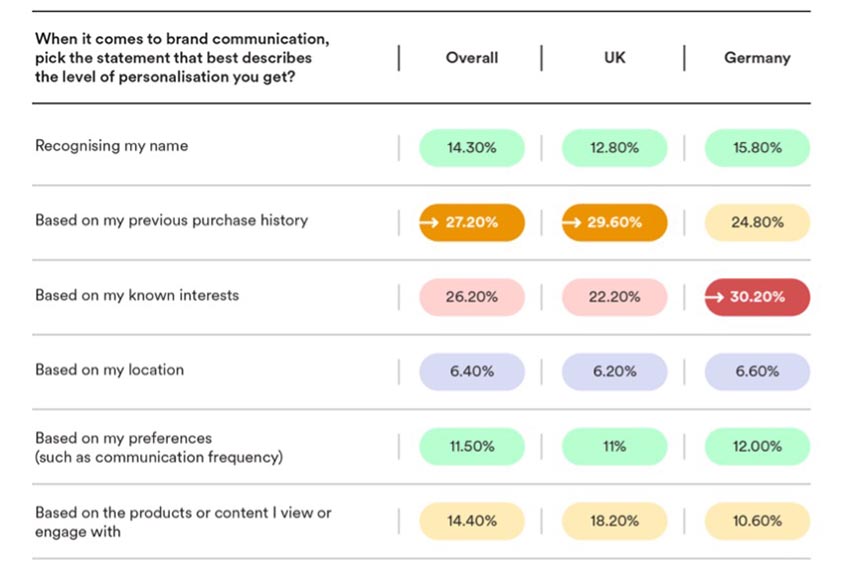
3. Discounts, discounts, discounts (again).
Nearly two-thirds of European shoppers said they expect a curated shopping experience from the brands with which they shop regularly. However, when asked (apart from quality) what they feel differentiates one brand from another, of the choices given, number one was discounts or offers based on items in their shopping carts (which might explain high rates of cart abandonment; are shoppers waiting for a brand to offer them a discount to finish the purchase?). This was followed by messages about new sales, products, and promotions. Educational content came in dead last.
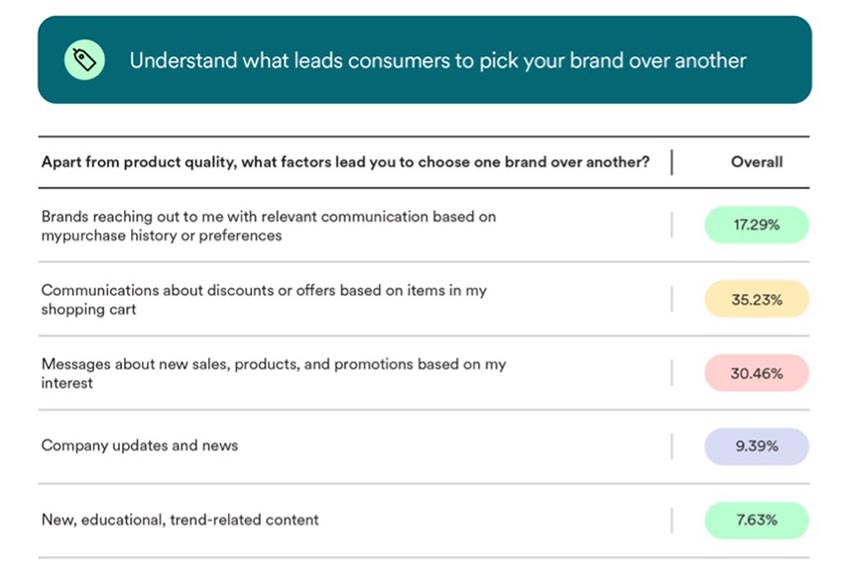
Interesting that, when it comes to choosing one brand over another, a brand that reaches out “with relevant communication based on my purchase history or preferences” only came in at 17%. Once again, discounts trump personalization.
4. Know my communications preferences.
What frustrates European consumers the most? When given the options of inconsistent messaging across channels, retargeting ads that follow them around, lack of awareness of their shopping preferences, and irrelevant ads and promotions, respondents chose receiving “too frequent or too few communications from a brand.”
This brings up an important question. Do you ask people on your mailing lists about their communications preferences, including frequency and channel? Desire to control the frequency and method of communications often comes up in consumer surveys, and yet while having an opt-in and opt-out for email communications is a must these days, we don’t often see opportunities for enabling more nuanced communications preferences, even though desire to do so often comes up in these surveys.
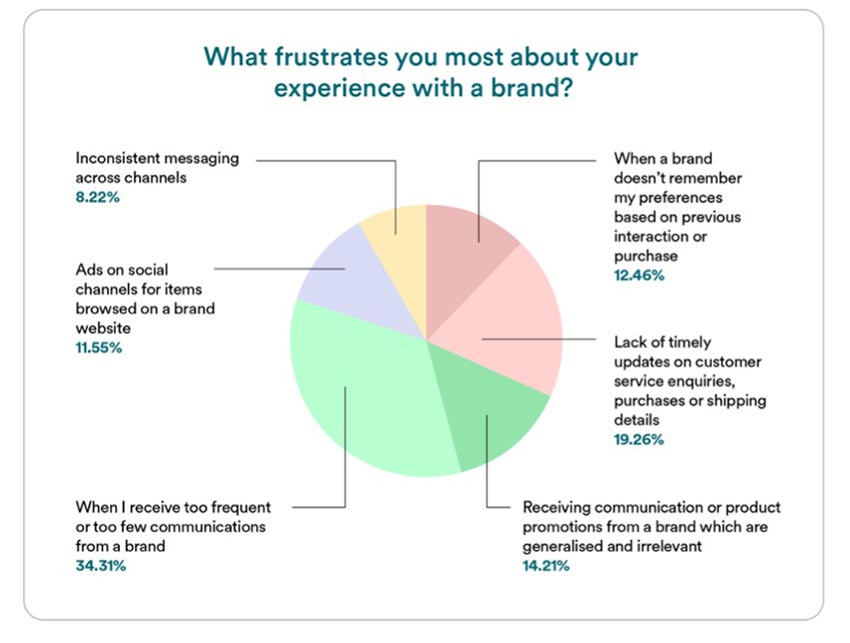
Interesting is that, once again, personalization based on preferences comes in fairly low. Only 12% of European consumers expressed frustration when a brand doesn’t remember their preferences based on previous interactions or purchase. In other words, we like when you remember and make things easy for us, but if you don’t, it’s not that big a deal as long as you don’t bombard us and we get discounts on the things we want.
5. “Pull” over “push” communications.
European consumers want to control their communications preferences, and one of those preferences is letting shoppers themselves dictate how they are exposed to personalized recommendations. Although 62% want a curated shopping experience, when asked how they like that curated shopping experience to be added to their current shopping, they chose a “pull” approach rather than a “push” approach. Nearly half (46%) said they would prefer that curation to take place via mobile app over 33% wanting recommendations when they enter the store or 20% wanting curated “look books” by email.
6. Twice weekly communications are tops.
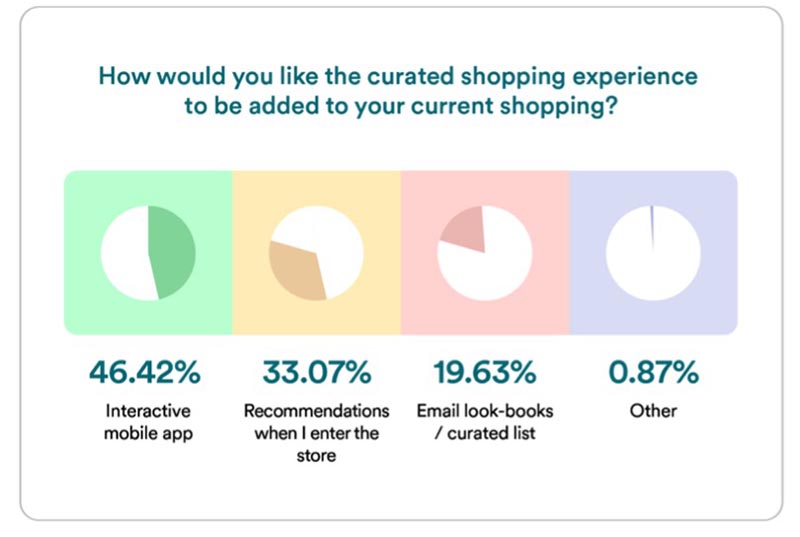
Just how often do European shoppers want to receive personalized communications? Although responses were spread across a variety of rhythms, the most popular response was twice per week (30%).
7. Consumers’ channel preferences are changing.
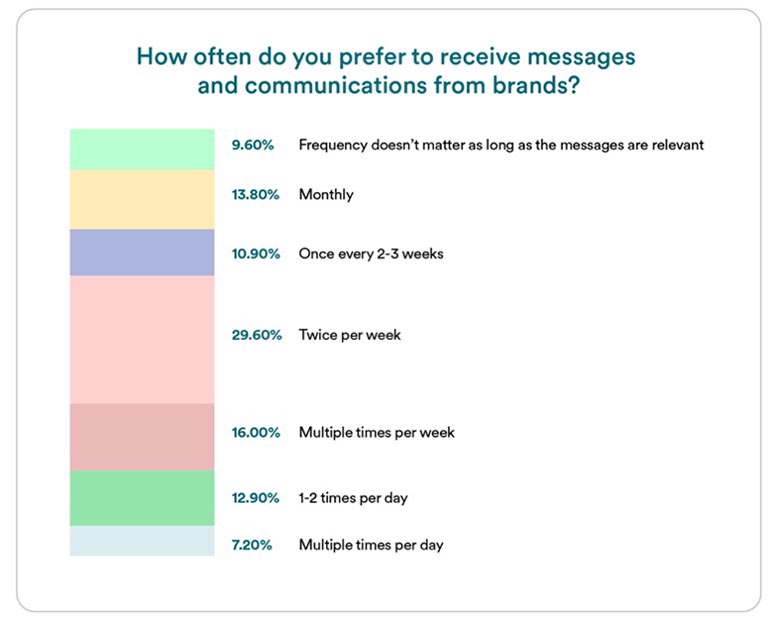
Two years ago, in Moengage’s Personalization Pulse (2021), European consumers indicated that they primarily used email to engage with brands. In 2023, however, the majority indicated that they preferred engaging with brands through their website and social media. Notes Moengage: “While WhatsApp and Chatbots are still lower on the engagement spectrum, they’ve seen quite an increase in usage since 2021. These are emerging channels that brands should explore in 2023.”
8. Consumers are willing to trade personal data for a better experience.
This is another trend we are increasingly seeing in surveys like these—consumers are becoming increasingly comfortable with the use of personal data used to create personalized experiences. While there is still a line when it comes to the “creep factor” in personalization, that line is moving. Nearly half (46%) of European consumers say they are willing to trade personal data like name, age, and location for a better experience.
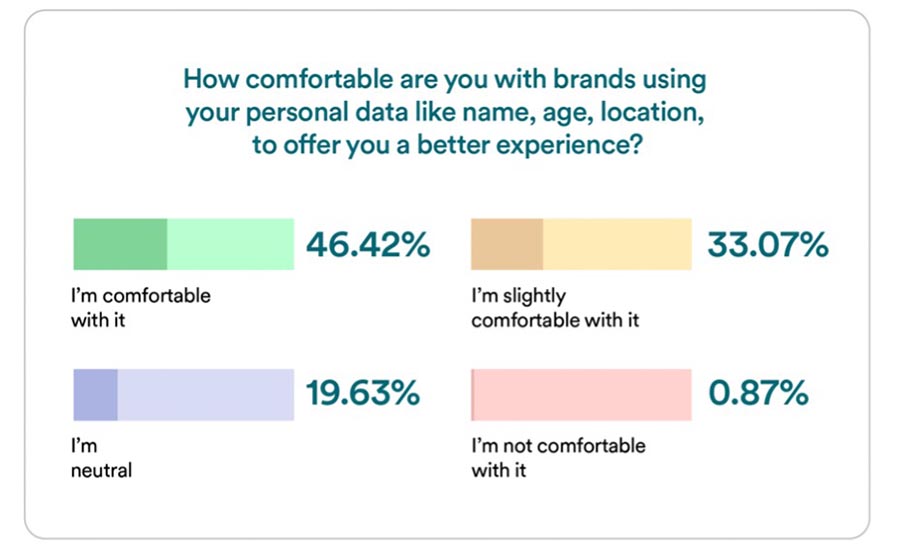
9. Maybe.
In the next question, consumers were asked which data they would prefer brands to use in order to personalize those experiences. By far and away, the answer was “purchase history” over other types of personal information. “Preferences and interests” came in a distant third at 19%. So consumers are willing to accept more use of their personal data…until asked specifically about different types. “Oh, wait. I didn’t mean that.”
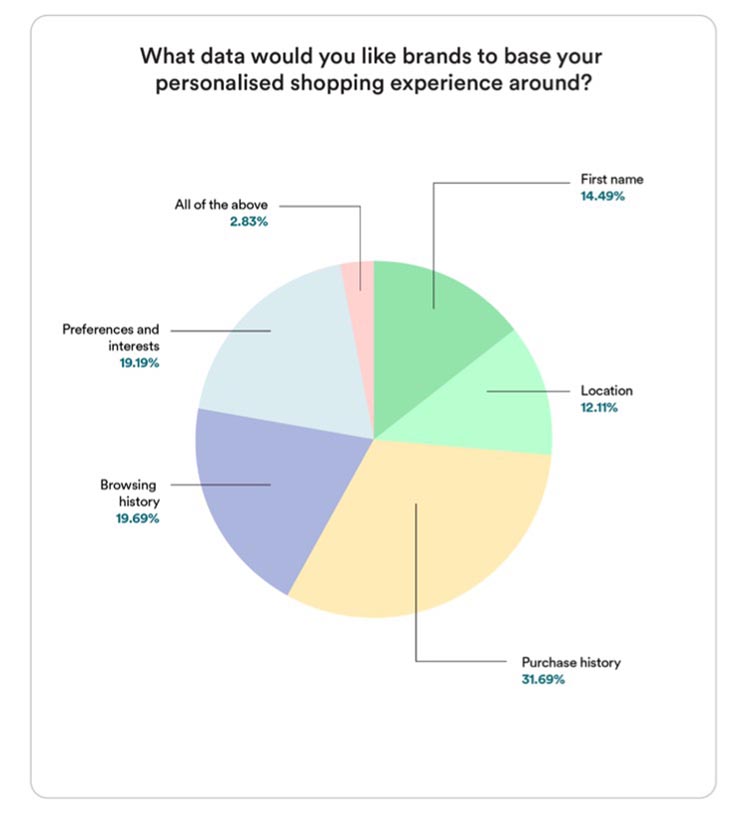
Moengage is a customer-engagement platform, so it’s survey is clearly designed to highlight the features of its own product. Thus, some of the most interesting answers may be the ones that are counter to the intent of the survey. Discounts trump personalization, and while personalization is preferred, it’s not always respondents’ number one answer.
So what does that mean? Clearly, personalization isn’t going away or becoming less important. Is it possible that, at this point, at least some level of personalization is assumed? Thus, it becomes the great equalizer, and other factors rise in importance? What do you think? Please share your thoughts in the comments.














